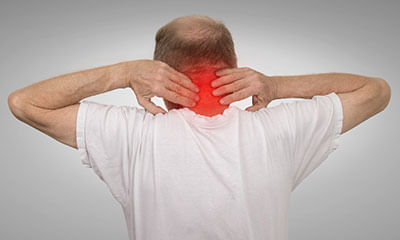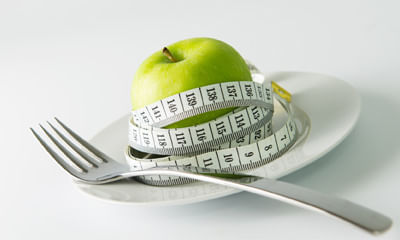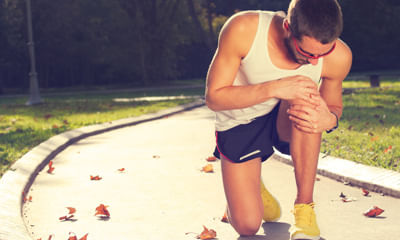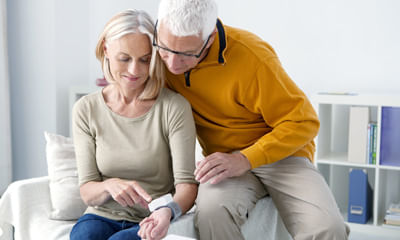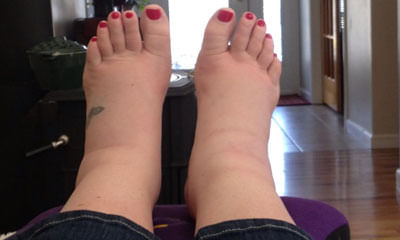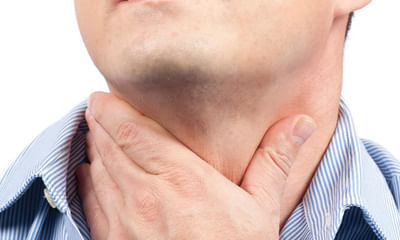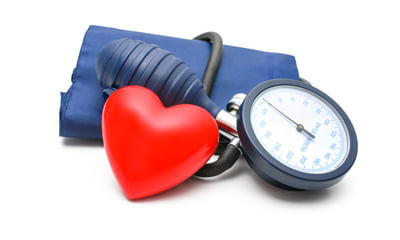Body Swelling And Weight Gain
Dear sir / madammy son (22) has been diagnosed with ankylosing spondylitis its early diagnosis. His hlab27 is positive. ...
Ask Free Question
Ankylosing spondylitis ankylosing spondylitis is a cause of back pain in adolescents and young adults. Ankylosing spondylitis is a form of chronic inflammation of the spine and the sacroiliac joints chronic inflammation in these areas causes pain and stiffness in and around the spine, including the neck, middle back, lower back, and buttocks. Over time, chronic inflammation of the spine (spondylitis) can lead to a complete cementing together (fusion) of the vertebrae, a process referred to as ankylosis. Ankylosis causes loss of mobility of the spine. Pt treatment deep breathing for lung expansion and stretching exercises to improve spine and joint mobility. Are also advised to sleep on a firm mattress and avoid the use of a pillow in order to prevent spine curvature. Aerobic exercise is generally encouraged as it promotes full expansion of the breathing muscles and opens the airways of the lungs. Home remedies physical therapy for ankylosing spondylitis includes instructions and exercises to maintain proper posture. This includes deep breathing for lung expansion and stretching exercises to improve spine and joint mobility. Since ankylosis of the spine tends to cause forward curvature (kyphosis), patients are instructed to maintain erect posture as much as possible and to perform back-extension exercises. Patients are also advised to sleep on a firm mattress and avoid the use of a pillow in order to prevent spine curvature. Ankylosing spondylitis can involve the areas where the ribs attach to the upper spine as well as the vertebral joints, thus limiting breathing capacity. Patients are instructed to maximally expand their chest frequently throughout each day to minimize this limitation. Physical therapists customize exercise programs for each individual. Swimming often can be a very beneficial form of exercise, as it avoids jarring impact of the spine. Ankylosing spondylitis need not limit an individual's involvement in athletics. People can participate in carefully chosen aerobic sports when their disease is inactive. Aerobic exercise is generally encouraged as it promotes full expansion of the breathing muscles and opens the airways of the lungs. Cigarette smoking is strongly discouraged in people with ankylosing spondylitis, as it can accelerate lung scarring and seriously aggravate breathing difficulties. Occasionally, those with severe lung disease related to ankylosing spondylitis may require oxygen supplementation and medications to improve breathing. People with ankylosing spondylitis may need to modify their activities of daily living and adjust features of the workplace. For example, workers can adjust chairs and desks for proper postures. Drivers can use wide rearview mirrors and prism glasses to compensate for the limited motion in the spine. You should check with your doctor before using compression socks for your swelling. These special socks should be properly fitted for you and your needs. Also, be sure to wear them during the day and remove them before you go to bed. Leg elevation if you stand a lot during the day, try propping your feet up or soaking them in water when you get home to help prevent swelling. Muscle relaxant: reduces muscle tension and helps relieve muscle pain and discomfort. Transcutaneous electrical nerve stimulation (also known as tens) is something which helps ease muscle pain and spasms. You can strengthen the muscles by doing tonificationie. Improving the tone of the muscles by adding either weight cuffs / sand bags which will help you to improve the strength of the muscle.
I'm over 53 with 74 kg weight with 153 cm height having asthma and now there is lot of pain in my knees doctors says the ...
Ask Free Question
Here are some general dietary tips that may be beneficial: maintain a balanced diet: focus on consuming a variety of nutrient-dense foods such as fruits, vegetables, whole grains, lean proteins (like poultry, fish, tofu, legumes), and healthy fats (such as avocados, nuts, seeds, and olive oil). Stay hydrated: drink plenty of water throughout the day to keep your joints lubricated and to help with weight loss. Control portion sizes: be mindful of portion sizes to avoid overeating, which can contribute to weight gain. Using smaller plates and bowls can help with portion control. Limit processed foods: minimize your intake of processed foods, sugary snacks, and beverages high in added sugars, as they can contribute to inflammation and weight gain. Incorporate omega-3 fatty acids: include sources of omega-3 fatty acids in your diet, such as fatty fish (salmon, mackerel, sardines), flaxseeds, chia seeds, and walnuts. Omega-3s have anti-inflammatory properties that may help reduce inflammation in the body, including the joints. Increase fiber intake: fiber-rich foods like fruits, vegetables, whole grains, and legumes can help you feel full and satisfied, which may aid in weight management. Additionally, fiber can help regulate blood sugar levels and improve digestion. Consider anti-inflammatory foods: some foods have anti-inflammatory properties that may help reduce inflammation in the body. These include berries, cherries, turmeric, ginger, green tea, and olive oil. Limit sodium intake: excess sodium can contribute to fluid retention and may exacerbate swelling in the joints. Aim to limit your intake of processed foods, canned soups, and salty snacks. Consult with a registered dietitian: consider working with a registered dietitian who can create a personalized meal plan tailored to your specific health needs, including your asthma and knee problems.
Doctor my mother has osteoarthritis is it curable its in initial stage is it curable and may I know how long it takes to ...
Ask Free Question
Symptoms of arthritis symptoms of osteoarthritis may include joint pain and progressive stiffness that develops gradually. Symptoms of may include painful swelling, inflammation, and stiffness in the fingers, arms, legs, and wrists occurring in the same joints on both sides of the body, especially upon waking up in the morning. Knee arthritis can be painful and debilitating. For osteoarthritis (oa) of the knee, self-care early on can often help significantly. It is important to stretch and strengthen the surrounding leg muscles to provide more support and reduce stresses around the joint. The following best bet exercises will help you get started on your path to feeling stronger, more flexible and more active. Remember: exercise should not be painful – if you experience pain, discontinue and consult with your physician. Advice: 1.must take adequate rest 2.apply hot water with mild heat with cotton towel 3.avoid cross leg sitting and long time standing 4. Put the small size chair under the ankle during sitting in the chair for leg elevation 5.do the exercise given below 2 times per day 1.quadriceps setting exercise helps to strengthen the quadriceps muscle (the big muscle on the front of the thigh), an important stabilizer of the knee. Lie on your back with the leg you want to exercise straight. Place a small rolled towel underneath the knee. Slowly tighten the muscle on top of the thigh (quadriceps) and push the back of the knee down into the rolled towel. Hold contraction for 5 seconds and then slowly release, resting 5 seconds between each contraction. Perform 3 sets of 10 repetitions, 1 time daily. 2.straight leg raise also helps to strengthen the quadriceps muscle. Lie on your back with the leg you want to exercise straight. The other knee should be bent to support your lower back. Tighten the muscle on the top of your thigh and lift to the level of your other knee. Slowly lower. Perform 3 sets of 10 repetitions, 1 time daily. Knee pain •patellar tendinitis: •risk factor •a combination of factors may contribute to the development of patellar tendinitis, including: •physical activity. •running and jumping are most commonly associated with patellar tendinitis. Sudden increases in how hard or how often you engage in the activity also add stress to the tendon, as can changing your running shoes. •tight leg muscles. Tight thigh muscles (quadriceps) and hamstrings, which run up the back of your thighs, can increase strain on your patellar tendon. •muscular imbalance. •if some muscles in your legs are much stronger than others, the stronger muscles could pull harder on your patellar tendon. This uneven pull could cause tendinitis. •chronic illness. •some illnesses disrupt blood flow to the knee, which weakens the tendon. Examples include kidney failure, autoimmune diseases such as lupus or rheumatoid arthritis and metabolic diseases such as diabetes. •complications •if you try to work through your pain, ignoring your body's warning signs, you could cause increasingly larger tears in the patellar tendon. Knee pain and reduced function can persist if you don't tend to the problem, and you may progress to the more serious patellar tendinopathy. •prevention •to reduce your risk of developing patellar tendinitis, take these steps: •don't play through pain. As soon as you notice exercise-related knee pain, ice the area and rest. Until your knee is pain-free, avoid activities that put stress on your patellar tendon. •strengthen your muscles. Strong thigh muscles are better able to handle the stresses that can cause patellar tendinitis. Eccentric exercises, which involve lowering your leg very slowly after extending your knee, are particularly helpful. •improve your technique. To be sure you're using your body correctly, consider taking lessons or getting professional instructions when starting a new sport or using exercise equipment. •therapy •a variety of physical therapy techniques can help reduce the symptoms associated with patellar tendinitis, including: •patellar tendon strap. A strap that applies pressure to your patellar tendon can help to distribute force away from the tendon and direct it through the strap instead. This may help relieve pain. •iontophoresis. This therapy involves spreading a corticosteroid medicine on your skin and then using a device that delivers a low electrical charge to push the medication through your skin. •platelet-rich plasma injection. This type of injection has been tried in some people with chronic patellar tendon problems. Studies are ongoing. It is hoped the injections might promote new tissue formation and help heal tendon damage. •probably your stamina would've gone down due to over use of the joints and the metabolic activity is more due to running. You need to consume good protein diet so that your body will act as a reservoir. It will help you to fight against rather than affecting one particular area of your body for eg. Knee joint. For knee ligament pain or inflammation you need to keep ice which will help you to prevent the inflammation progressing further. •patellofemoral pain syndrome •usually fully relieved with simple measures or physical therapy. It may recur, however, if you do not make adjustments to your training routine or activity level. It is essential to maintain appropriate conditioning of the muscles around the knee, particularly the quadriceps and the hamstrings. •there are additional steps that you can take to prevent recurrence of patellofemoral •they include: •wearing shoes appropriate to your activities •warming up thoroughly before physical activity •incorporating stretching and flexibility exercises for the quadriceps and hamstrings into your warm-up routine, and stretching after physical activity •increasing training gradually •reducing any activity that has hurt your knees in the past •maintaining a healthy body weight to avoid overstressing your knees •joints, ie. In the upper limbs if the pain is present in the fingers/wrist and in the lower limbs it the pain is present in the toes/ ankle, then we shall definitely say it is rheumatic arthritis. •if your proximal joints (ie. Shoulder, hip & knee has pain) then you can pour hot (warm) water in that area to reduce the inflammation. If you have pain in the distal joints ie. Wrist, fingers, ankle, toes then you can wear either elbow brace or wrist brace which will help you to feel warm and very protective. And also immerse the distal joints in the hot water tub which will help you to reduce the pain. •knee pain during driving or watching movie. •it might due to lack of movements in the knee while the joints are immobilized during driving and while watching movies. It is important that you need to have movements in and around the knee so that the blood flow will not be disturbed. •knee ligament laxity•if you have problem in your legs then it might be due to ligament laxity where your legs would become very weak due to the old ligament injury and that should be treated immediately. •wear knee cap so that you will feel firm while walking or climbing stairs.•this is a general strain and for this you can follow these measures: one keep a pillow right under the knee while sleeping, next is you can keep ice in the painful area for about 5--10 minutes, if pain still persists you can stretch your body by twisting the waist on both sides how we used to do in the school drill similarly you can try! one time you can do hot water fermentation that would help to reduce the muscle strain. •legs becoming numb and also pain is there when the patient walks for 10-15 minutes?•it looks like you are anaemic. If you feel that the legs are becoming numb then keep your legs warm which is important, probably you can wear mcr chappals inside the house/ socks inside the house. Put a door mat when ever you sit so that you will feel comfortable. Also pour warm water in the legs which would help you to get better circulation. •knee pain. If you are overweight, losing weight will also help to reduce pressure on your knee. Knee pain this is a general knee pain and for this you can follow these measures: one keep a pillow right under the knee while sleeping, next is you can keep ice in the painful area for about 5--10 minutes, it looks like you are is important to check that. Anaemia always leads to the symptoms of being tired and also having body pain though there may not be any pathological reasons for knee pain. With knee exercises you will definitely feel better and muscles must be strengthened .•don't play through pain. As soon as you notice exercise-related knee pain, ice the area and rest. Until your knee is pain-free, avoid activities that put stress on your patellar tendon. •strengthen your muscles. Strong thigh muscles are better able to handle the stresses that can cause patellar tendinitis. Eccentric exercises, which involve lowering your leg very slowly after extending your knee, are particularly helpful. •improve your technique. To be sure you're using your body correctly, consider taking lessons or getting professional instructions when starting a new sport or using exercise equipment. •therapy •a variety of physical therapy techniques can help reduce the symptoms associated with patellar tendinitis, includingback pain it looks like you are anaemic. If you have back pain after you sit for long hours then it is due to your haemoglobin levels as it is important to check that. Anaemia always leads to the symptoms of being tired and also having back / leg pain though there may not be any pathological reasons for back pain. It looks like you are anaemic. And also you have to check with your vitamin and calcium, if the bones are weak then automatically the pain gets triggered more as there is less severity of the painbe strengthened 1.resisted terminal knee extension: make a loop with a piece of elastic tubing by tying a knot in both ends. Close the knot in a door at knee height. Step into the loop with your injured leg so the tubing is around the back of your knee. Lift the other foot off the ground and hold onto a chair for balance, if needed. Bend the knee with tubing about 45 degrees. Slowly straighten your leg, keeping your thigh muscle tight as you do this. Repeat 15 times. Do 2 sets of 15. If you need an easier way to do this, stand on both legs for better support while you do the exercise. 2•standing calf stretch: stand facing a wall with your hands on the wall at about eye level. Keep as arthritis is very common that you get generally bilaterally. Ice therapy would definitely help to reduce the inflammation. We also advise you to use knee cap which would help to prevent the knee from damaging further and also to maintain the quadriceps muscle tone •stretching exercises. Regular, steady stretching exercises can reduce muscle spasm and help lengthen the muscle-tendon unit. Don't bounce during your stretch. 3•strengthening exercises. Weak thigh muscles contribute to the strain on your patellar tendon. Exercises that involve lowering your leg very slowly after extending it can be particularly helpful, as can exercises that strengthen all of the leg muscles in combination, such as a leg press.•this is a general knee pain and for this you can follow these measures: one keep a pillow right under the knee while sleeping, next is you can keep ice in the painful area for about 5--10 minutes, it looks like you are is important to check that. Anaemia always leads to the symptoms of being tired and also having body pain though there may not be any pathological reasons for knee pain. With knee exercises you will definitely feel better and muscles must be strengthened.
I just get a cramp in my shoulder after 7 month of multi in-directional instability and now it’s paining and I think the ...
Ask Free Question
1.pendulum stretch do this exercise first. Relax your shoulders. Stand and lean over slightly, allowing the affected arm to hang down. Swing the arm in a small circle — about a foot in diameter. Perform 10 revolutions in each direction, once a day. As your symptoms improve, increase the diameter of your swing, but never force it. When you're ready for more, increase the stretch by holding a light weight (three to five pounds) in the swinging arm. 2. Towel stretch hold one end of a three-foot-long towel behind your back and grab the opposite end with your other hand. Hold the towel in a horizontal position. Use your good arm to pull the affected arm upward to stretch it. You can also do an advanced version of this exercise with the towel draped over your good shoulder. Hold the bottom of the towel with the affected arm and pull it toward the lower back with the unaffected arm. Do this 10 to 20 times a day. 3. Finger walk face a wall three-quarters of an arm's length away. Reach out and touch the wall at waist level with the fingertips of the affected arm. With your elbow slightly bent, slowly walk your fingers up the wall, spider-like, until you've raised your arm as far as you comfortably can. Your fingers should be doing the work, not your shoulder muscles. Slowly lower the arm (with the help of the good arm, if necessary) and repeat. Perform this exercise 10 to 20 times a day. 4. Cross-body reachsit or stand. Use your good arm to lift your affected arm at the elbow, and bring it up and across your body, exerting gentle pressure to stretch the shoulder. Hold the stretch for 15 to 20 seconds. Do this 10 to 20 times per day. 5. Armpit stretch using your good arm, lift the affected arm onto a shelf about breast-high. Gently bend your knees, opening up the armpit. Deepen your knee bend slightly, gently stretching the armpit, and then straighten. With each knee bend, stretch a little further, but don't force it. Do this 10 to 20 times each day. Starting to strengthen as your range of motion improves, add rotator cuff–strengthening exercises. Be sure to warm up your shoulder and do your stretching exercises before you perform strengthening exercises. 6. Outward rotationhold a rubber exercise band between your hands with your elbows at a 90-degree angle close to your sides. Rotate the lower part of the affected arm outward two or three inches and hold for five seconds. Repeat 10 to 15 times, once a day. 7. Inward rotation stand next to a closed door, and hook one end of a rubber exercise band around the doorknob. Hold the other end with the hand of the affected arm, holding your elbow at a 90-degree angle. Pull the band toward your body two or three inches and hold for five seconds. Repeat 10 to 15 times, once a day.
Dr. My age is 50, and my weight is 63 kg. I have a high bp problem from last 10 years and taking medicine telma-h and ne ...
Ask Free Question
1.no alcohol 3. No smoking/ tobacco/drugs/ avoid pollution 4. Diet - no ghee/ butter, have mix of vegetable oils - mustard, til, ground nut, olive oil, have more green vegetables and fruits, have whole grain atta, no fried. Fast. Spicy / processed/ junk food. Less sugar, potato, rice. Less salt. 5. 30 mts brisk walk daily 6. Deep breathing exercise for 10 mts daily 7. Meditation daily for 10 mts. 6-8 hrs of sleep at night 8. Expose your body to sun for 15-20 mts daily after some oil massage to get vit d. 9. Take more water 10 maintain oral hygiene medicine can not be advised for open question ,for medicine and further advise contact on private consults good luck.
Hi, I am 36 years old. Currently I am having swelling in both my ankles almost all the time. Also my weight suddenly inc ...
Ask Free Question
1. Drink 8 to 10 glasses of water per day. 2. Prop your feet on cushions, pillows, or even things like phone books, when you sleep. Also try elevating your feet several times a day as well. 3. Get moving- if you sit or stand in one area for a long period of time (like at work), this can lead to swollen feet. Try to move a little bit each hour, even if it’s a walk to the break room, a walk around the block at lunch, flexing your knees and ankles, or a lap around the office. 4. Make some dietary changes- reducing your sodium intake can help decrease swelling in your body, including in your feet. 5. Lose weight if you’re overweight- being overweight can cause reduced blood circulation, leading to swelling of the lower extremities. 6. Massage your feet- massage can be great for swollen feet and can also promote relaxation. Massage (or have someone massage them for you!) your feet toward your heart with firm strokes and some pressure. This can help move the fluid out of the area and reduce swelling.
Dear doctors I hear crack/popping sound in my front neck and also back neck every time I make my neck/throat movement. W ...
Ask Free Question
If you're experiencing a crackling or popping sound in your neck when you move it, it could be due to several possible reasons: 1. Air bubbles: the sound could be caused by the release of air bubbles in the joints of the neck as you move. This is similar to the sound produced when you crack your knuckles. It is generally harmless and not a cause for concern. 2. Joint dysfunction: it's possible that the crackling sound is related to joint dysfunction, such as misalignment or degeneration of the cervical spine. This could be due to conditions like cervical osteoarthritis or cervical facet joint syndrome. If the cracking sound is accompanied by pain or restricted movement, it's advisable to consult a healthcare professional for an evaluation and appropriate management. 3. Muscle or ligament tension: tight muscles or ligaments in the neck can also cause cracking or popping sounds when they rub against each other during movement. This can occur due to poor posture, stress, or muscle imbalances. Stretching exercises, relaxation techniques, and postural correction may help alleviate these symptoms. If the cracking sound is not associated with pain, swelling, or other concerning symptoms, it is generally considered normal. However, it's always a good idea to consult a healthcare professional for a proper evaluation and diagnosis, especially if you're experiencing accompanying symptoms or if the sound is causing significant discomfort. The healthcare professional will be able to assess your specific situation, perform a physical examination, and may order additional tests if necessary. They can provide you with appropriate advice and treatment options based on the underlying cause of the crackling sound in your neck.
Hello sir yesterday my mom had uterus removal surgery. She is 36 years old .so can you tell me what is good diet chart o ...
Ask Free Question
It's normal not to worry about. Normal diet 3 months avoid weight lifting and give normal food eating foods that contain phytoestrogens as they can help prevent conditions related to the loss of estrogen due to the removal of the ovaries and uterus. Foods rich in phytoestrogens are whole grains, soy milk, tofu, flaxseed, edamame, you can eat dairy products if you do not feel constipated. Consume items such as skim milk, cottage cheese, and yogurt. These all should be eaten in a less to normal quantity as it might lead to constipation. Take about 6 to 8 weeks to fully recover after having an abdominal hysterectomy. Fruits: fruits like pomegranates, oranges, and berries pineapple and papaya are known to reduce swelling and inflammation because they contain protease enzymes that the body uses to digest proteins. consuming pineapple and papaya after surgery will help offset the swelling that may occur after surgery after your body has fully healed from a hysterectomy, it's still possible for you to experience painful sex—
Hi, my age is 35. I take olmesartan 20 and metoprolol 25. For high bp my feet is swelling for past two 3 days. Kindly gu ...
Ask Free Question
1.no alcohol 2. Reduce body weight 3. No smoking/ tobacco/drugs/ avoid pollution 4. Diet - no ghee/ butter, have mix of vegetable oils - mustard, til, ground nut, olive oil, have more green vegetables and fruits, have whole grain atta, no fried. Fast. Spicy / processed/ junk food. Less sugar, potato, rice. Less salt. 5. 30 mts brisk walk daily 6. Deep breathing exercise for 10 mts daily 7. Meditation daily for 10 mts. 6-8 hrs of sleep at night 8. Expose your body to sun for 15-20 mts daily after some oil massage to get vit d. 9. Take more water 10 maintain oral hygiene medicine can not be advised for open question ,for medicine and further advise contact on private consults good luck.
My husband has a history of uric acid (above 6), vid d deficiency also. He also has varicose veins. He is experiencing e ...
Ask Free Question
It is reversible 100 % with diet please contact mobile in what's app if you have gout, a form of arthritis characterized by the accumulation of uric acid crystals in the joints, it's important to follow a diet that helps manage your condition. The following are some dietary recommendations for individuals with gout, based on an indian diet: 1. Limit purine-rich foods: purines are compounds that break down into uric acid in the body. Foods high in purines can increase uric acid levels and trigger gout attacks. Limit or avoid purine-rich foods such as organ meats (liver, kidneys), red meat (beef, lamb), seafood (anchovies, sardines, shellfish), and certain legumes (lentils, chickpeas). 2. Increase low-fat dairy intake: low-fat dairy products, such as milk, yogurt, and cheese, have been associated with a lower risk of gout. They contain proteins that may help lower uric acid levels. Choose low-fat or skim varieties, and aim for 2-3 servings per day. 3. Consume plenty of fruits and vegetables: fruits and vegetables are generally low in purines and high in fiber and antioxidants, which can be beneficial for managing gout. Include a variety of colorful fruits and vegetables in your diet, such as berries, cherries, citrus fruits, leafy greens, tomatoes, and bell peppers. 4. Emphasize whole grains: whole grains like brown rice, whole wheat, oats, and quinoa are healthy carbohydrate sources that provide fiber and nutrients. They can be included in meals to replace refined grains. 5. Stay hydrated: drinking an adequate amount of water helps in flushing out uric acid from the body. Aim for at least 8-10 glasses of water per day, and include hydrating fluids like coconut water, herbal teas, and low-sugar fruit juices. 6. Limit alcohol and sugary beverages: alcohol, especially beer, can raise uric acid levels and trigger gout attacks. It's best to limit or avoid alcohol consumption. Additionally, sugary beverages like soft drinks and sweetened fruit juices should be minimized, as they may contribute to weight gain and worsen gout symptoms. 7. Moderate your intake of protein: while high-purine protein sources should be avoided, it's still important to consume moderate amounts of protein for overall health. Include lean sources of protein like skinless poultry, eggs, low-fat dairy, and plant-based proteins like legumes and tofu. 8. Control portion sizes and maintain a healthy weight: excess weight can increase the risk and severity of gout attacks. Watch your portion sizes, avoid overeating, and focus on achieving and maintaining a healthy weight through a balanced diet and regular physical activity. Remember, it's always a good idea to consult with a healthcare professional or registered dietitian who can provide personalized dietary advice and guidance based on your specific needs and medical condition. Dr. hariharan dhamodharan m.s.ortho d.n.b.ortho.

